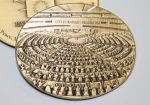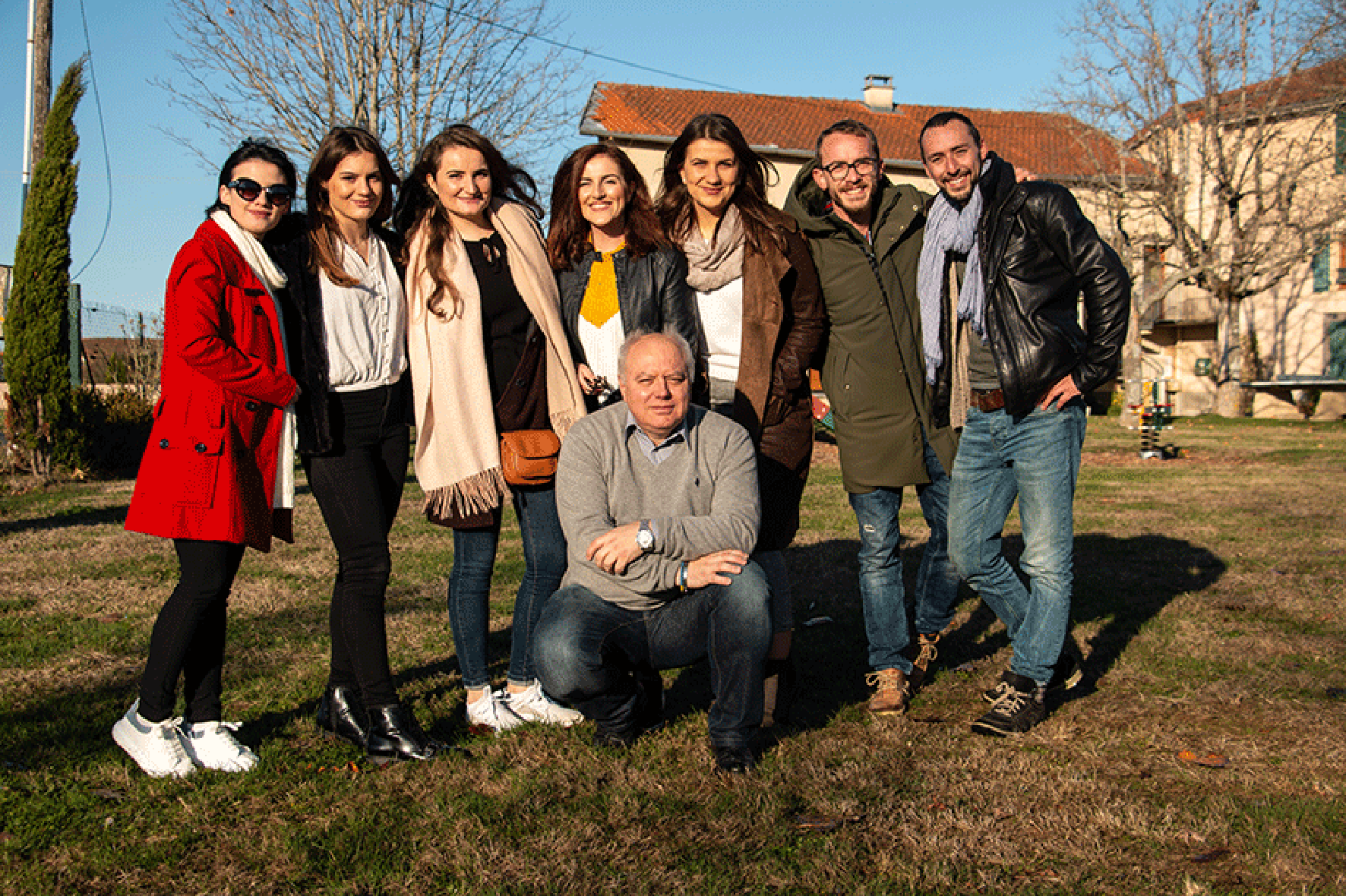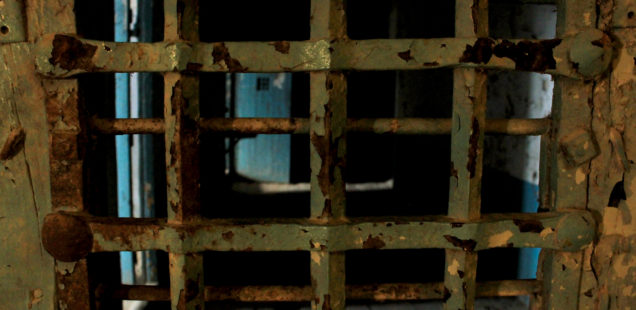
A journey from the Middle Ages to the Present
Alberina Haxhijaj & Elvira Berisha
Moulins, the town of Bourbons in the Auvergne region, is well known for its historic monuments. A journey from the Middle Ages to today can be experienced through a visit in the Anne-de-Beaujeu Museum. Along with the museum, visitors standing at the heart of town of Moulins, can also visit two other buildings: Mantin House and the Castle known as “Mal Coiffée”. The medieval castle of the Dukes of Bourbon, stands to the south of the gardens.
Known in the Bourbonnais region as the “Mal Coiffée”, the castle was for a long time the highest building in the town and a symbol of Duke’s power since its construction commissioned by Louis II, Duke of Bourbon, in about 1400. This remarkable site is a unique witness of the history, from the Middle Ages to today. At first the residence of the Duke of Bourbon, part of the building was later converted into accommodation for wealthy tenants. In the late 18th century, the castle became a prison and remained so until 1993.
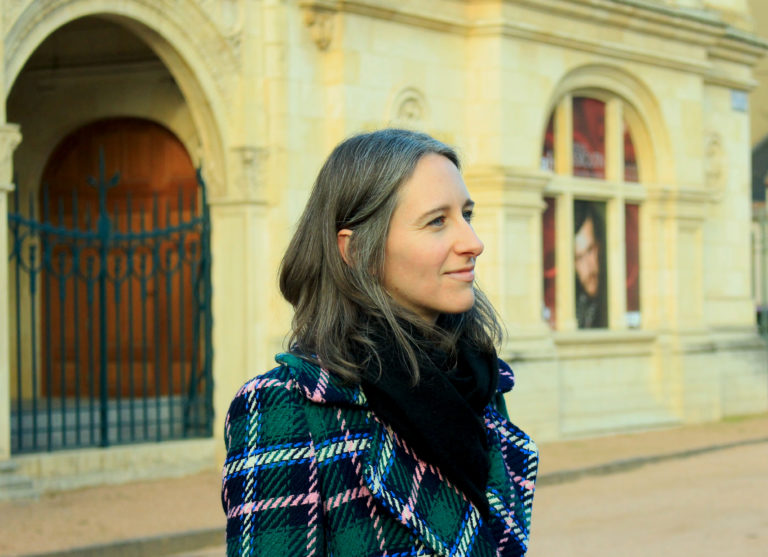
Maud Leriche, guide/ @Nora Mlinaric
Maud Leriche, a guide who works there, explains that in this castle, a visitor may find architectures elements from Anne of France and Pierre II de Bourbon.
“When this building was a jail, they decided to transform some spaces. You can see they have created small rooms and they used more stones. So here you can find lots of styles inside one single building”, explains Maud Leriche.
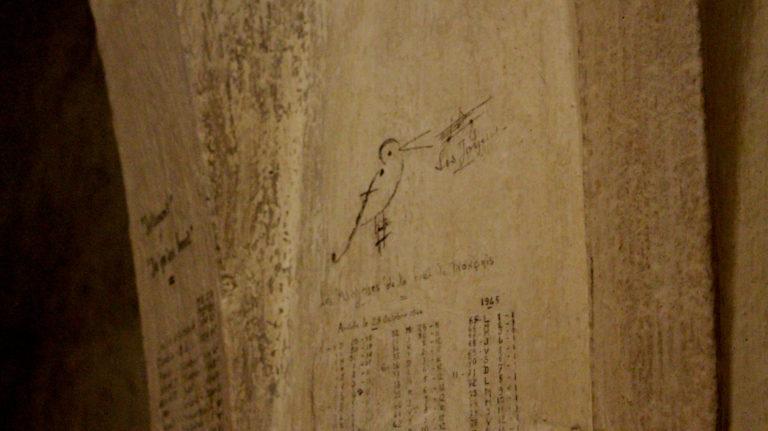
@Nora Mlinaric
Within the walls of the prison, can be find notes from prisoners. A bird painted using music notes, poems or some prayers can be seen in the walls of the building, once a very infamous prison. There, in just one cell, they put around fifty people. Holes in the walls are still there. Through the holes, the supervisors heard prisoner’s conversations. And conversely, the prisoners used to listen to other prisoners, while they were tortured. During a visit there, a visitor may hear the clock of the tower a few meters away, an important building for the prisoners.
“When they listened to the clock scales and their noises, they realized that there is a world beyond these walls. And it was their only connection with the outside world”, says Maud Leriche.
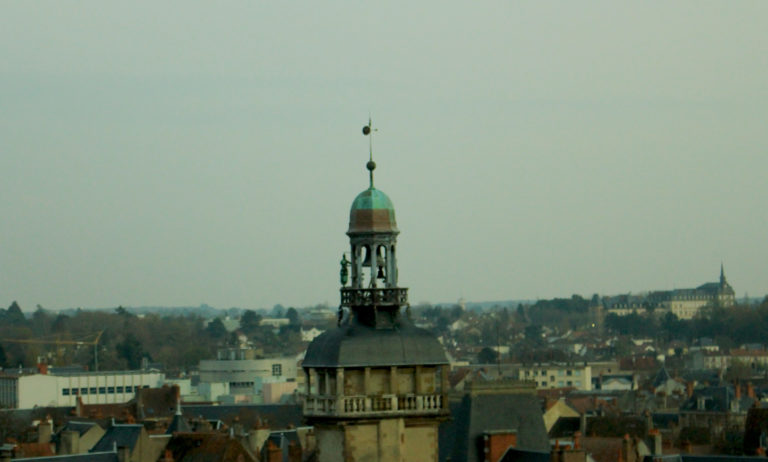
Her colleague, Julie Courtinat, explains that Allier (French department) has the willing to preserve the past while giving a lesson to new generations.
“If they know the past they won’t do the same mistakes. The castle ‘La Mal Coiffée’ has been open seven years ago to show the past, the Second World War, medieval time, and the heritage that has been preserved. The process of maintaining the monument requires a lot of money but we still believe in preserving and showing this part of Moulins and France”, says Julie Courtinat.
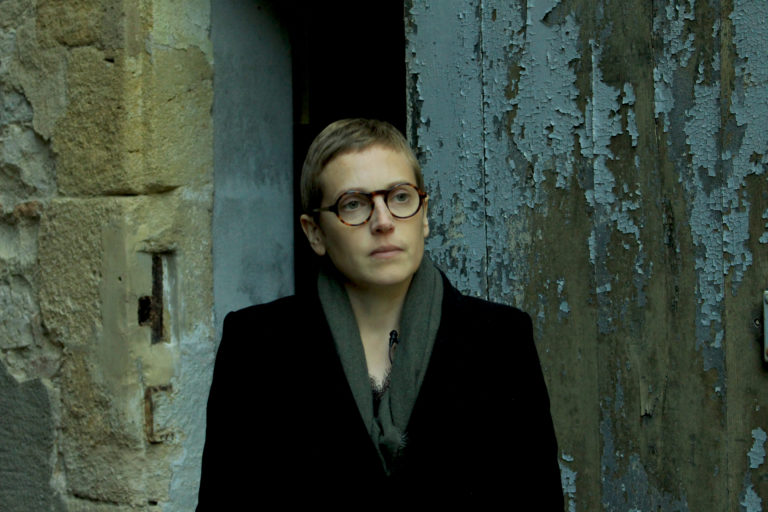
Julie Courtinat, guide/ @Nora Mlinaric
Meanwhile, Maud Leriche adds that the aim is to protect castles and old castles that represent the heritage of the city.
“We have a rich patrimony and we should show it, how it was and how it is while preserving. Here in Allier we have hundreds of castles and they are important for us. We have to open this place so people can come and have a visit and be aware of the heritage that we have”, explains Maud Leriche.
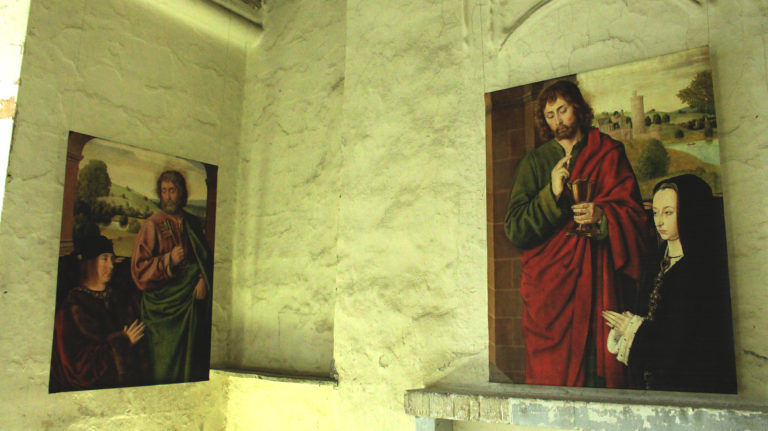
@Nora Mlinaric
Darks shadows of the former prison, are left behind, when a visitor enters in the next building. Mantin House, an elegant building, built between 1893 and 1897, was reopened in 2010.
The Maison Mantin welcomes visitors for a tour around an authentic house in which the furniture and art collections have remained intact since the death of its owner, a bourgeois of the 19th century named Louis Mantin. Built partly over the ruins of the Ducal Bourbon Palace, the picturesque building is designed to preserve the collection of the owner: a scholar, curious and art lover. Closed for several decades, damaged by the weather changes, this house has undergone restoration work quite titanic and respectful before its reopening.
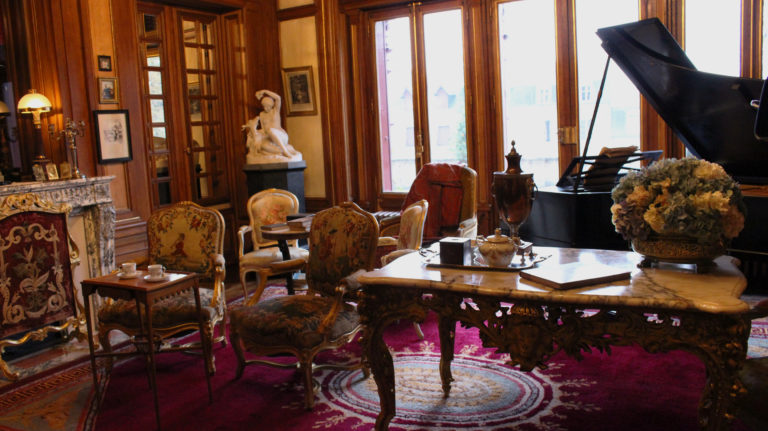
@Nora Mlinaric
“Louis Mantin decided to build a house that will become a museum when he dies. He died very young because he was ill, so he wrote a will. According to the legend he said that his house should be closed for one century and then it can be open. Something that was misunderstand because when he died, he said that his house should stay open at least one hundred years after his death. But since the town didn’t have the money to keep it open they changed his will and they closed it for a century”, explains Maud Leriche.
She adds that the Mantin house is designed as a showcase for art. With a taste for rarity, the unusual, the eclectic and the exotic, he decorated every room with a stunning maze of paintings, books, photographs, miniature objects, naturalized animals, sculptures etc. Everything in the house is exposed in the way he left it.
“Today, this house is open all the year and we do visit for children, schools, and different people from different countries who are interested to know more about its history. This house can be discovered only guided because is really fragile and only in a small group”, tells Maud Leriche.
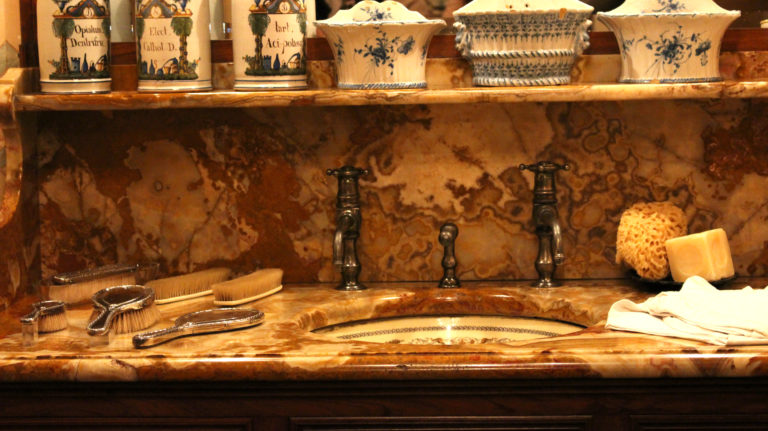
@Nora Mlinaric
To the north, is located the museum gallery. The museum is hoisted in the Renaissance Pavilion commissioned by Anne de France and her husband Pierre de Beaujeu around 1500. This pavilion was part of the prestigious palace of the Dukes of Bourbon.
“An important detail about this pavilion is that it has been the first Italian Renaissance-style monument in France. You can see around lots of castles that have in their architecture the renaissance style but this was the first monument”, tells Julie Courtinat.
Museum was inaugurated in 1910 in Moulins, in Allier, in the Auvergne-Rhône-Alpes region. It has two exhibitions: one permanent and one temporary. The permanent exhibition, allows visitors to discover a variety of collections: Egyptology, regional archeology, history of the Bourbon family, Bourbon medieval sculpture of the Middle Ages and the Renaissance, painting, sculpture and decorative arts mainly from Germany and the Netherlands of the 15th and 16th centuries, 8th century 18th century decorative art (earthenware and cutlery), paintings and sculptures of the 19th century.
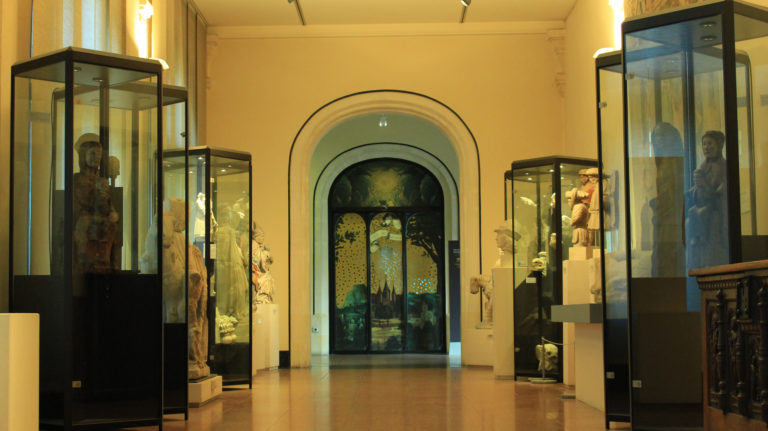
@Nora Mlinaric
Visitors may admire the works of some of the leading artists of the late 19th century such as Léon Jean Gérôme, Ernest Meissonier, Alexandre Cabanel. The museum’s collections include some 20,000 objects and works of art. This collection has been patiently constituted thanks to donations, legacies, purchases but also deposits of other museums.
The museum organizes one or two annual temporary exhibitions for which it borrows works preserved in the greatest French museums: Louvre Museum, Orsay Museum, Petit-Palais Museum of Fine Arts of the City of Paris, Museum of Cluny- National Museum of the Middle Ages, the MUCEM, the museums of fine arts of Lyon, Dijon, La Rochelle, Montpellier, etc.
On October 20 this museum hosted an exhibition about Marcellin Desboutin. Anne-de-Beaujeu Museum, which owns some hundreds works by the artist, has decided to bring this man back to life.
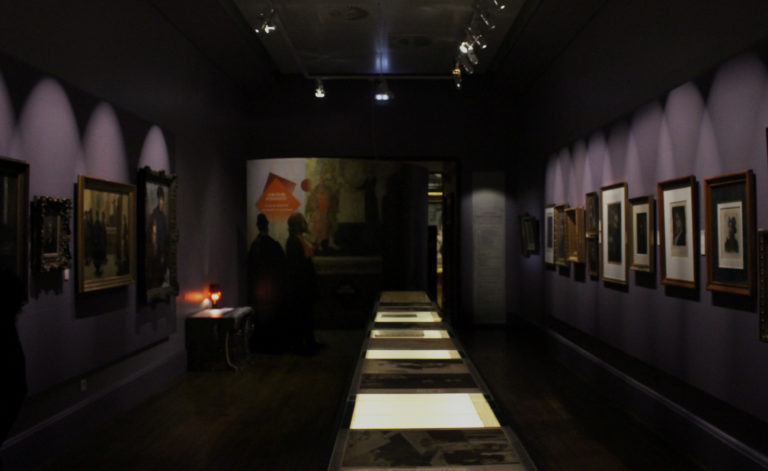
@Nora Mlinaric
“We paid a special attention to the young audience. For example, the children’s course includes a cartoon, which the museum has specially commissioned to explain the dry point engraving, a favorite technique of the engraver Desboutin. We have also put a touch screen, adapted texts that will discover to the youngest different currents of painting of the late nineteenth century, including Impressionism, and several educational games”, explains Julie Courtinat.
This exhibition offers to public two hundred works (paintings, engravings, photos), among which loans from major museums and cultural institutions (in addition to the Musée d’Orsay, the Palace of Versailles in particular).
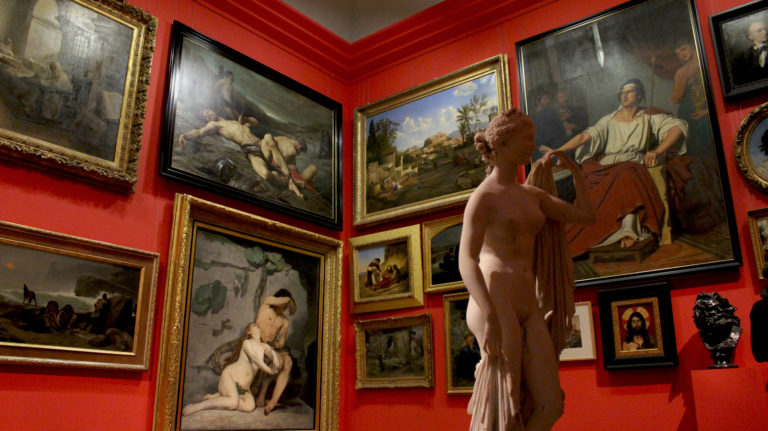
@Nora Mlinaric

